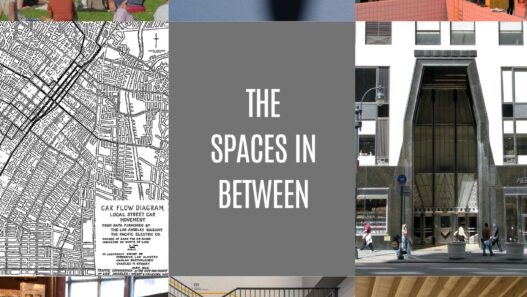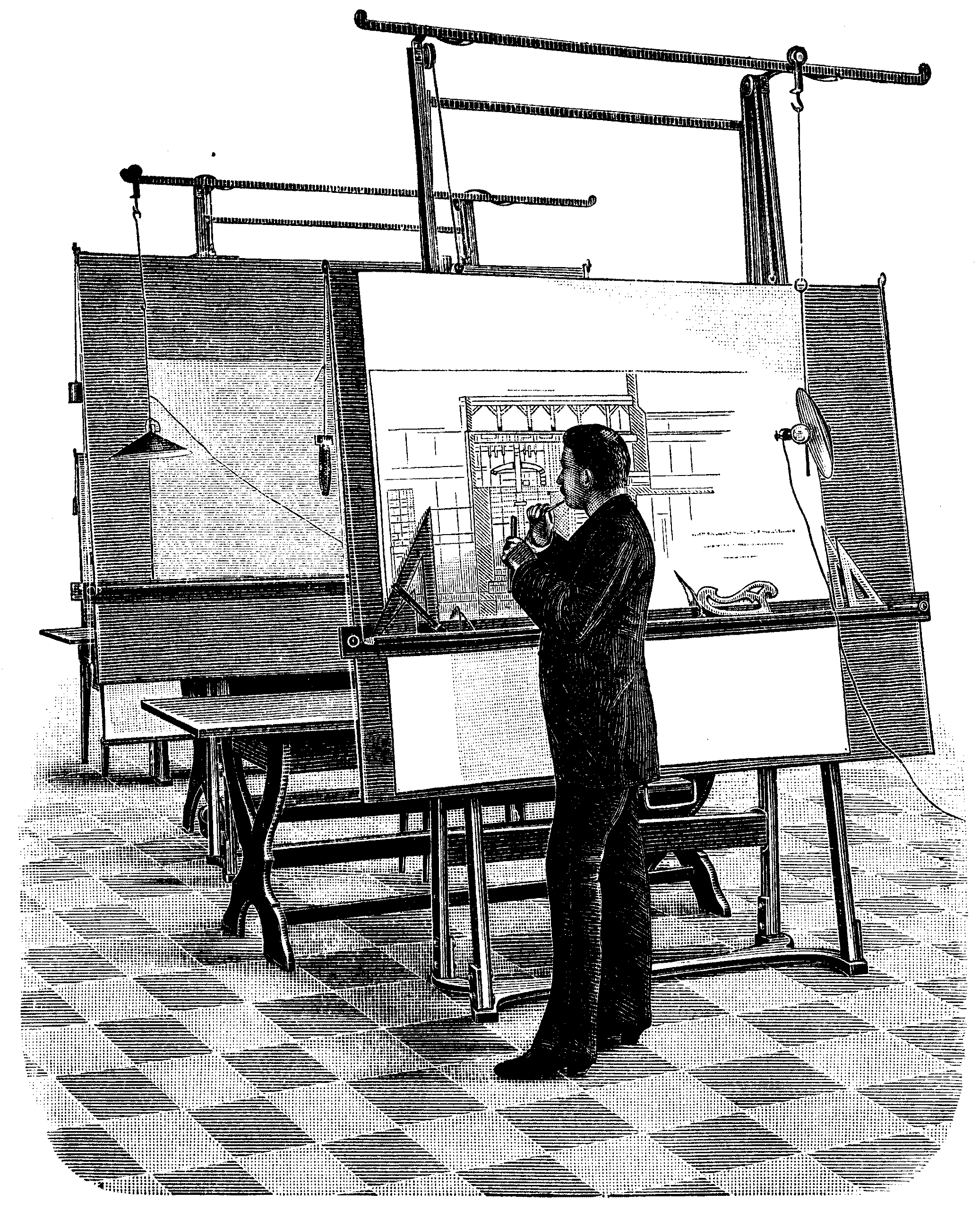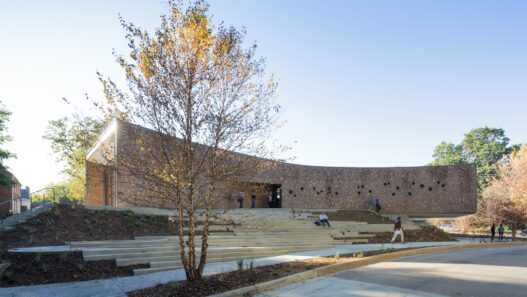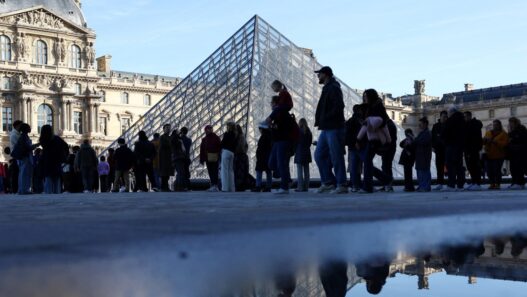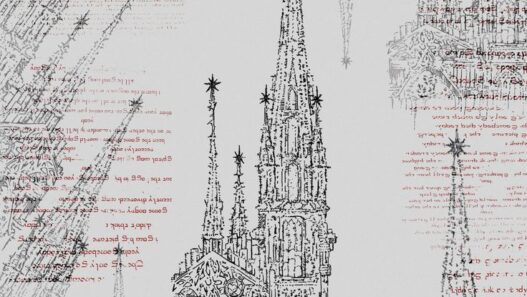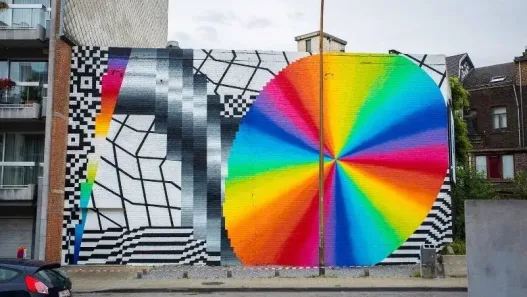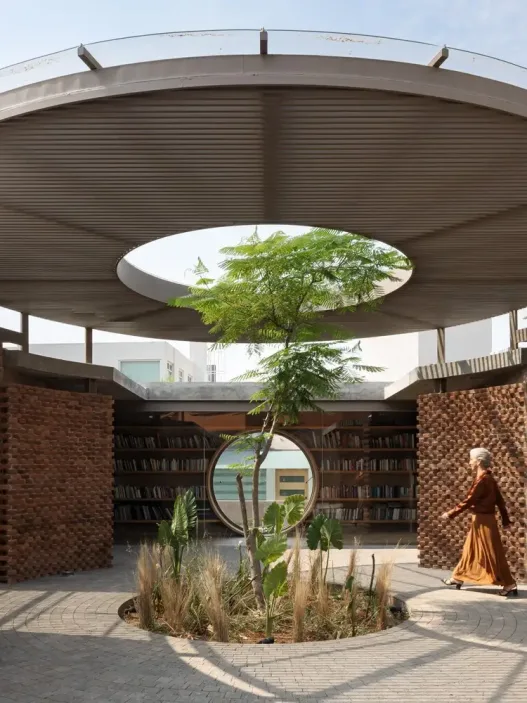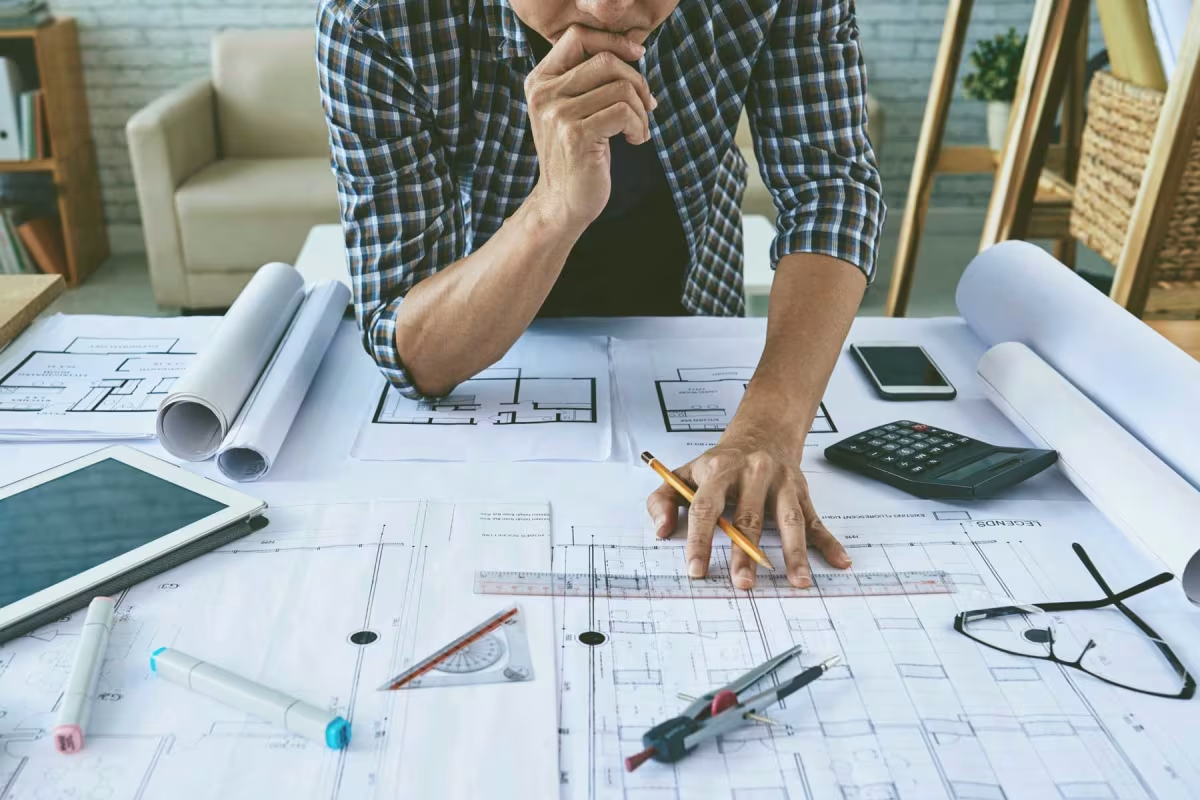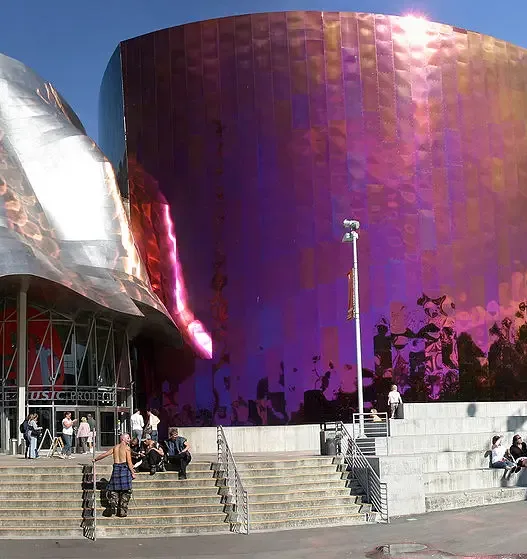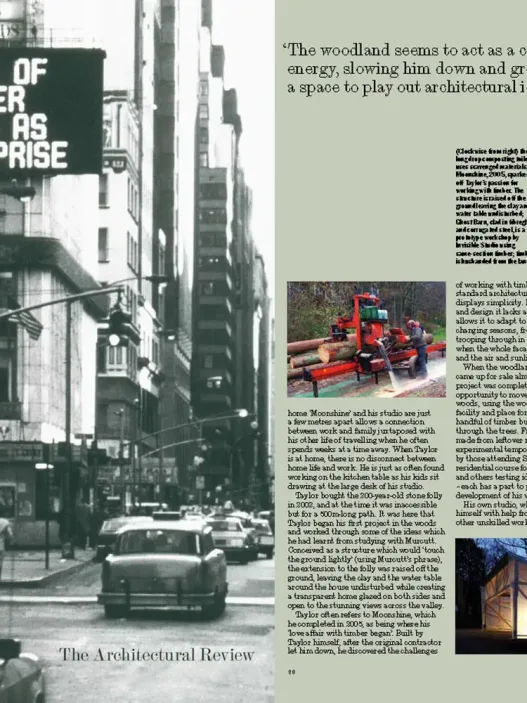Public art and architecture play a vital role in shaping our urban environments and influencing the way we experience our cities. They are not only functional elements, but also expressions of culture, identity and social values. This blog post aims to explore the deep connections between public art and architecture, their historical significance and their importance in urban design. By understanding these concepts, we can appreciate how our environment is crafted to enhance public spaces and enrich community life.
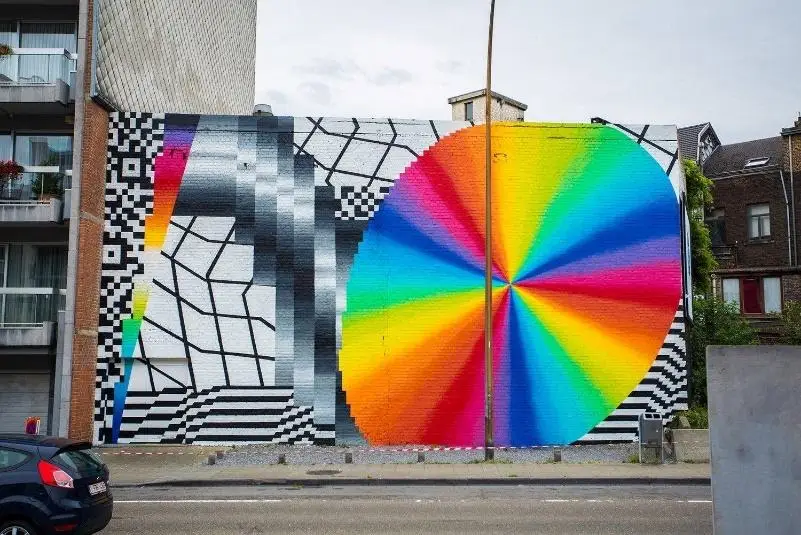
Definition of Public Art
Public art refers to artistic works created for public spaces, accessible to everyone without requiring an entrance fee. Sculptures, murals, installations and performances integrated into the urban landscape can be considered in this context. Unlike art in galleries or museums, public art is designed to engage with the public, provoke thought and encourage dialogue. Its purpose is multifaceted; it can beautify a space, commemorate historical events or address social issues. As part of the public realm, these artworks invite interaction, allowing viewers to connect with the art and each other in meaningful ways.
Historical Context of Public Art
The history of public art goes back to ancient civilisations where monuments and statues were erected to honour gods, commemorate heroes or mark important events. In ancient Rome, for example, public spaces were decorated with large statues and fountains that reflected the culture and values of the time. In the 20th century, we see a shift in the role of public art, especially during movements such as the Harlem Renaissance and the rise of street art. Artists began to use urban spaces as canvases for social commentary, transforming neglected areas into vibrant expressions of community identity. Today, public art continues to evolve, embracing new technologies and interactive elements that invite participation and interaction.
The Importance of Architecture in Urban Design
Architecture serves as the backbone of urban design and influences how we navigate and interact with our surroundings. Well-designed buildings and public spaces create a sense of place, strengthen community connections and improve overall quality of life. Effective urban architecture considers factors such as accessibility, sustainability and aesthetic appeal, ensuring that spaces are not only functional but also beautiful. Iconic structures such as the Sydney Opera House or the Guggenheim Museum in Bilbao have become symbols of their cities, attracting tourism and inspiring local pride. Furthermore, thoughtful urban design seamlessly integrates public art, transforming ordinary spaces into extraordinary experiences.
The Relationship between Art and Architecture
The relationship between art and architecture is a dynamic interaction that enriches both disciplines. Architecture provides the framework for the exhibition of public art, while art brings life and meaning to architectural spaces. This collaboration can be seen in projects such as the High Line in New York, where art installations enhance the experience of walking in an elevated park built on a former railway line. Similarly, the incorporation of murals and sculptures into urban plazas adds character and encourages social interaction. By blending these two elements, cities can create environments that are not only functional but also culturally vibrant, inviting exploration and participation.
Iconic Public Art in Urban Spaces Case Studies
Public art serves as a reflection of a city’s identity, culture and community spirit. It transforms urban spaces, encouraging interaction and dialogue between residents and visitors alike. This research examines some of the iconic public art installations in the United States, revealing how these works contribute to the vitality of urban life.
The Bean in Chicago
In the heart of Millennium Park, Cloud Gate, affectionately known as “The Bean”, stands as a symbol of Chicago’s artistic ambition and community spirit. Designed by Indian artist Anish Kapoor, this stainless steel sculpture creates a dynamic interplay of art and architecture, mesmerising viewers with its reflective surface that distorts the city skyline.
Bean invites interaction; visitors are drawn to its smooth, mirror-like exterior, frequently taking selfies and interacting with the reflections. This interaction fosters a sense of community and belonging as people from different backgrounds come together to appreciate art in an open environment. The installation has become a focal point for a variety of events, including concerts and festivals, and is further embedded in the cultural fabric of the city. Its significance goes beyond aesthetics; it represents Chicago’s commitment to public art and accessibility, making high-quality art available to all.
The Rose Garden in Portland
Portland’s International Rose Test Garden is not only a horticultural marvel, but also a celebration of art and nature. Located in Washington Park, it features more than 10,000 rose bushes, each meticulously cultivated to showcase new varieties. The artistry of the garden lies in its design and the sensory experience it offers – vibrant colours, intoxicating scents and soothing sounds of nature.
The garden is a living canvas that evolves with the seasons. Visitors can stroll the rose-lined pathways and experience the beauty of nature intertwined with the art of landscape design. It also plays a vital role in community engagement, hosting events such as the annual Rose Festival that further enrich Portland’s cultural scene. This combination of art and nature exemplifies how public spaces can promote well-being and connection among urban residents.
The Mural Movement in Philadelphia
Philadelphia is often referred to as the mural capital of the United States, a title it has earned through its vibrant and extensive mural programme. The Mural Arts Philadelphia initiative transforms walls across the city into canvases for local artists to tell stories of community, history, and social justice. Each mural invites viewers into a narrative, often reflecting the diverse experiences of city residents.
The real-world applications of this movement extend beyond aesthetics; murals address critical social issues, promote local culture, and even contribute to economic revitalisation. Neighbourhoods once marked by neglect are attracting renewed interest and investment thanks to the beauty and cultural significance of murals. This art form not only beautifies urban spaces, but also creates a sense of identity and belonging, fostering pride and ownership among residents.
‘Kissing’ Sculpture in San Diego
San Diego’s “Unconditional Surrender” sculpture, often referred to as the “Kissing” sculpture, captures a romantic moment from World War II, depicting a sailor and a nurse sharing an iconic embrace. Inspired by Alfred Eisenstaedt’s famous photograph, this colossal sculpture is a tribute to the sacrifices made during the war and the joy of reunion.
Located near the USS Midway Museum, the statue attracts visitors who come to reflect on the past and celebrate the present. The statue is a reminder of love, hope and the resilience of the human spirit. The sculpture not only enriches the waterfront experience, but also engages the public in conversations about history and memory, making it a poignant landmark in San Diego’s urban landscape.
Cactus Garden in Phoenix
Located in the arid terrain of Phoenix, the Desert Botanical Garden features a stunning Cactus Garden that exemplifies the beauty of desert flora. This living art installation showcases a variety of cacti and succulents, artfully arranged to highlight their unique shapes, colours and textures.
The Cactus Garden serves as an educational platform that teaches visitors about desert ecosystems and the importance of conservation. It emphasises the relationship between art and nature, showing how beauty can flourish even in harsh climates. This garden not only beautifies the natural landscape, but also encourages sustainable practices among the community, fostering a deeper appreciation for the environment.
In conclusion, these case studies emphasise the transformative power of public art in urban spaces. Each installation not only beautifies its surroundings, but also encourages community engagement, education and reflection, proving that art is an important component of the urban experience.
The Role of Public Art in Community Identity
Public art has an important place in shaping the identity of communities around the world. It serves as a canvas for expression, a beacon of culture and a point of connection for residents. From murals to sculptures, public art transforms ordinary spaces into extraordinary experiences, influencing how people perceive and interact with their surroundings. This exploration reveals how public art enhances local culture, promotes community engagement, impacts the local economy, reflects social issues, and fosters civic pride.
Enhancing Local Culture
Public art is a vital expression of local culture and often tells stories of a community’s heritage, traditions and values. Inspired by the unique characteristics of their surroundings, artists fill public spaces with colours, shapes and narratives that resonate with residents. In cities like Philadelphia, for example, murals celebrate the city’s history and diversity, transforming blank walls into vibrant storytellers. These artistic representations not only beautify spaces, but also educate the public about their cultural roots, creating a sense of belonging and identity.
Moreover, public art can serve as a platform for local artists, providing them with opportunities to showcase their work and engage with the community. When art reflects local stories, it fosters pride and promotes a deeper understanding of the cultural fabric that connects residents. This connection fosters a sense of community and belonging, making public art a true cornerstone of local culture.
Encouraging Community Participation
Public art has a remarkable ability to bring people together and encourage participation and co-operation among community members. Art installations often serve as gathering points that encourage social interactions and community engagement. Events such as art walks or festivals centred on public art create opportunities for residents to come together, celebrate their shared space and connect with each other.
In addition, public art projects often involve community input and collaboration in the creation process. Residents can participate in workshops or discussions that inform the themes and designs of the artwork, making the final product a true reflection of the community’s collective voice. This participation not only beautifies the artwork, but also strengthens community ties as individuals feel a sense of pride and ownership in contributing to their environment.
Impact on the Local Economy
The presence of public art can have a significant positive impact on the local economy. Artistic installations attract visitors, attracting tourists and art enthusiasts who contribute to local businesses. Cafes, shops and hotels often benefit from the increased foot traffic generated by popular art spaces. For example, cities such as Austin, Texas have used public art to increase their attractiveness, leading to a thriving tourism sector that stimulates the local economy.
Moreover, public art can increase property values in surrounding areas. Neighbourhoods that embrace artistic expression often become more attractive places to live, attracting new residents and businesses. This economic revitalisation can be seen in regions transformed by arts initiatives, creating vibrant, economically thriving communities that celebrate creativity.
Art as a Reflection of Social Problems
Public art serves as a powerful medium through which artists can address and reflect on pressing social issues. It often offers commentary on issues such as inequality, environmental concerns and social justice, making art a catalyst for dialogue and change. Murals and installations can challenge the status quo, inspire activism and raise awareness about important issues affecting local communities.
For example, street art in urban areas often addresses themes of racial equality, gender rights and climate change, bringing these debates into public spaces where they cannot be ignored. This intersection of art and social commentary not only engages audiences, but also encourages them to think critically about their environment and the world at large, fostering a culture of awareness and action.
Fostering Civic Pride
Finally, public art plays an important role in fostering civic pride among community members. When residents see their local environment adorned with artworks that reflect their identity and values, it instils in them a sense of pride and ownership. This pride is not just about the aesthetics of their environment; it is about the collective stories, struggles and triumphs represented through art.
Communities that adopt public art projects often experience a resurgence in civic engagement, with residents becoming actively involved in the maintenance and promotion of their shared spaces. From participating in clean-up efforts to advocating for new art initiatives, this increased civic engagement fosters a deeper connection to the community and a commitment to its future.
Ultimately, public art is more than a decoration; it is a vital component of community identity. By enhancing local culture, encouraging participation, stimulating the economy, reflecting social issues and fostering civic pride, public art enriches residents’ lives and transforms places into vibrant, meaningful places. As communities continue to embrace and invest in public art, they create an ever-evolving narrative that celebrates their unique identity and strengthens the bonds between its members.
Integrating Public Art into Architectural Design
The combination of public art and architectural design creates vibrant spaces that resonate with communities and enhance the built environment. This integration goes beyond aesthetics; it encourages a sense of identity and belonging among residents while inviting interaction and dialogue. By combining artistic expression with structural form, architects and artists can transform ordinary spaces into extraordinary experiences, enriching urban landscapes and public spaces.
Collaborative Design Processes
Collaboration is at the heart of successfully integrating public art with architectural design. In this process, architects, artists, community members and various stakeholders come together to share ideas and visions. Initially, discussions often centre around the goals of the project, the needs of the community and the context of the site. Through workshops and brainstorming sessions, participants can explore how art can complement architectural elements and vice versa.
A key concept of this collaborative process is the idea of participatory design, where community input directly influences artistic decisions. This not only ensures that the final product resonates with those who will use the space, but also empowers community members by giving them a voice in shaping their environment. Successful co-operation projects often lead to innovative solutions that reflect the unique character of the region and foster pride and ownership among residents.
Examples of Successful Integration
Numerous cities around the world demonstrate the profound impact of this collaboration by showcasing exemplary integrations of public art and architecture. The “Seattle Central Library” designed by Rem Koolhaas is a notable example. The striking geometric form of the building is complemented by a series of public artworks that engage visitors and enhance the overall experience. The library not only serves its functional purpose, but also functions as a cultural landmark, inviting people to explore both literature and art.
Another inspiring example is “The High Line” in New York, where a reused elevated railway has been transformed into a public park. The design seamlessly incorporates art installations, ranging from sculptures to murals, into the landscape. This integration creates a dynamic environment where visitors can appreciate nature, art and urban life simultaneously. Such projects show how careful integration can revitalise areas and encourage community participation.
Integration Challenges
Despite the benefits of integrating public art with architecture, several challenges can arise throughout the process. One major obstacle is the different goals and timelines of artists and architects. While architects focus on structural integrity and functionality, artists may prioritise creative expression and emotional impact. Bridging these perspectives requires effective communication and a willingness to compromise.
In addition, funding can be a challenge as public art projects often rely on grants and community support. Securing financial resources that meet both artistic and architectural needs can be complex. It is also crucial to ensure that works of art are kept up to date and maintained over time; neglect can lead to deterioration, reducing the intended impact of integration. Addressing these challenges requires foresight, planning and continuous co-operation between all parties involved.
Future Trends in Art and Architecture
As urban environments continue to evolve, the integration of public art with architectural design is likely to embrace new trends. One emerging trend is the use of sustainable materials and practices in both art and architecture. Artists and architects are increasingly exploring eco-friendly solutions and creating installations that not only beautify spaces but also promote environmental awareness.
Another trend is the inclusion of interactive art, where technology enables dynamic experiences. Projects that engage the public through augmented reality or responsive installations can transform passive viewing into active participation. This shift encourages deeper connections between people and their environment, making public spaces more inviting and inclusive.
There is also a growing focus on social equity in urban design. Integrating artworks that reflect different cultural narratives and address social issues can promote dialogue and understanding. As cities strive to become more inclusive, public art will play a vital role in representing the voices of all residents.
The Role of Technology in Integration
Technology is revolutionising the way public art and architecture intersect. Digital tools enable architects to visualise designs and collaborate with artists in innovative ways. For example, 3D modelling software allows simulations of how art will interact with architectural elements, ensuring cohesive integration from the outset.
Furthermore, developments in materials such as projection mapping and interactive installations offer artists new avenues for expression. These technologies can transform static spaces into immersive experiences that captivate and encourage viewers to explore. For example, public spaces equipped with sensors can respond to human interaction and create a dynamic relationship between the environment and its users.
As technology continues to advance, the potential for integrating public art with architecture will expand, encouraging creativity and innovation. This synergy not only enhances the visual landscape, but also enriches community interactions, making public spaces more vibrant and engaging. In this evolving landscape, collaboration between artists and architects will be crucial in shaping the cities of tomorrow.
Public Art and Urban Space Utilisation
Public art plays a transformative role in urban environments, breathing life into spaces that might otherwise feel neglected or underutilised. It serves not only as a visual enrichment, but also as a catalyst for community engagement and social interaction. As cities evolve, the integration of art into public spaces becomes crucial to revitalise spaces, enhance urban planning and create interactive environments that invite participation. This research explores how public art can reshape urban landscapes by balancing aesthetics and functionality.
Revitalising Underutilised Spaces
Underused urban spaces often offer unique opportunities for revitalisation through public art. Whether vacant lots, abandoned buildings or neglected parks, these spaces can become thriving centres of activity when infused with creativity. Public art installations can draw people in by arousing curiosity and encouraging exploration. For example, a once deserted street can be transformed with vibrant murals, inviting both locals and tourists to stroll the street and interact with the artworks.
This approach not only beautifies the environment, but also fosters a sense of ownership and pride in the community. Neighbourhoods can come together to support local artists, creating a narrative that reflects their shared history and culture. The transformation of these areas often leads to economic revitalisation with the emergence of small businesses and cafes nearby, further increasing the vitality of the area.
The Role of Art in Urban Planning
The integration of art into urban planning is a powerful tool for creating harmonious and dynamic environments. Planners are increasingly realising that art can enhance the functionality of a place while contributing to its identity. By incorporating art into the planning process, cities can create environments that are not only visually appealing but also encourage social interaction and community engagement.
For example, the High Line in New York exemplifies this approach. Originally a disused elevated railway, the High Line has been redesigned as a green public park adorned with art installations reflecting the culture and history of the city. This innovative use of space demonstrates how art can play a vital role in shaping urban experiences by encouraging walking, relaxation and social gatherings.
Creating Interactive Spaces
Interactive art installations have the potential to transform public spaces into engaging experiences. These artworks invite participation and strengthen connections between community members. Whether it is an interactive sculpture that responds to touch or a digital mural that changes with the viewers’ movements, such installations encourage people to interact not only with the art but also with each other.
Consider the work of artists who create “playgrounds for adults” where swings, slides and climbing structures are designed for all ages. These installations can be found in city parks and create cheerful environments that encourage playful interactions. Such spaces not only provide a sense of strangeness, but also enhance the overall quality of urban life by encouraging physical activity and social connections.
Art as a Wayfinding Tool
Public art can also serve a practical purpose in urban environments by aiding wayfinding. Creative signage and art installations can guide residents and visitors through complex urban landscapes, making navigation more intuitive and enjoyable. By using artistic maps, sculptural landmarks and vibrant murals, cities can help people find their way around while adding character to the environment.
In cities like Chicago, for example, large-scale murals are strategically placed near transit stops and popular destinations, serving as both landmarks and guides. This not only increases the aesthetic appeal of the city, but also improves the overall user experience, making it easier for people to explore and discover new areas.
Balancing Art and Functionality
While public art is essential to enrich urban spaces, it is equally important to balance artistic expression with functionality. Art should enhance the usability of a space rather than obstruct it. Urban planners and artists should co-operate to ensure that installations serve their purpose while contributing to the aesthetics of the environment.
For example, benches designed as works of art can provide seating while also functioning as a visual focal point. In parks, sculptures can be integrated into the landscape, providing both beauty and shade. This balance ensures that public art serves the needs of the community, while encouraging appreciation of creativity and design.
Ultimately, public art is a vital component of urban land use; it can revitalise underutilised areas, enhance urban planning, create interactive experiences, aid navigation and balance aesthetics and functionality. As cities continue to grow and evolve, embracing the power of public art can lead to more vibrant, connected and liveable urban environments. Through thoughtful integration, art can transform spaces into places that inspire, engage and unite communities.
Future Perspectives
As we approach the end of our exploration of public art in urban design, it is important to reflect on the profound impact of art on our cities and societies. Public art not only beautifies spaces, but also fosters a sense of identity and belonging among city dwellers. It stimulates conversations, inspires creativity and serves as a canvas for cultural expression. The intersection of art and architecture is vital to creating vibrant urban environments that resonate with the people who live in them.
Summary of Key Points
Throughout our discussion, we have emphasised several critical aspects of public art and its role in urban environments. Public art enhances aesthetic appeal, stimulates local economies and promotes social cohesion. It can transform ordinary spaces into vibrant places rich in history and meaning. Key examples include murals that tell community stories, sculptures that challenge social norms and installations that encourage interactive experiences. Each of these elements emphasises the importance of integrating artistic initiatives into urban planning for the benefit of all.
The Future of Public Art in Urban Design
Looking to the future, the future of public art in urban design looks promising, but requires conscious thought and innovative approaches. As cities grow and develop, so should the art that reflects their dynamic nature. Advances in technology such as augmented reality and digital installations are opening up new ways for artists to engage with the public. Imagine walking through a park and encountering a digital mural that changes according to the time of day or community events. There is also an increasing emphasis on sustainability and environmentally friendly practices, which can be reflected in public art projects that use recycled materials or promote environmental awareness.
Encouraging Support for Public Art Initiatives
Support for public art initiatives should come from a variety of stakeholders, including local governments, businesses and residents. Funding is often a significant barrier, but can be addressed through public-private partnerships, grants and crowdfunding campaigns. Businesses can play an important role in financing projects when they recognise the value of public art in attracting customers and improving the image of their community. Moreover, by prioritising public art in their urban planning agendas, local governments can ensure that art is seen as an essential component of urban development rather than an afterthought.
Final Thoughts on Art and Architecture
In conclusion, the relationship between art and architecture is one of mutual reinforcement. Art enriches architectural spaces, giving them meaning and life, while architecture provides a framework for artistic expression. As we continue to navigate the complexity of urban environments, prioritising public art will not only foster a sense of place, but also create a more engaged and inspired citizenry. The future of our cities depends on our commitment to weaving art into the fabric of urban life – transforming places into vibrant, meaningful places for all to enjoy.



